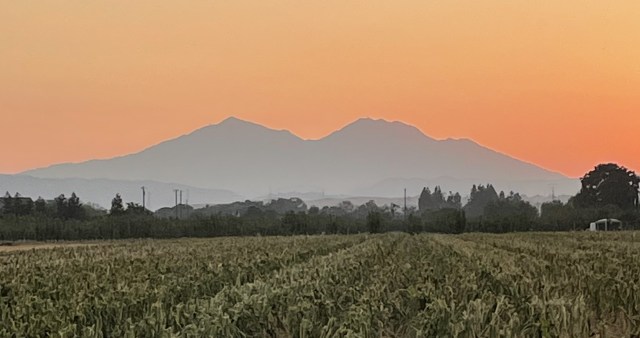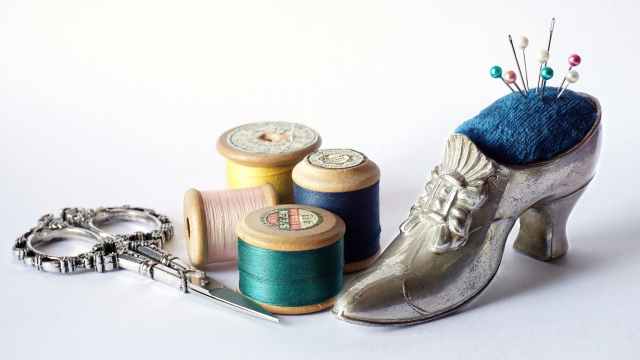Your cart is currently empty!

My Soap Making Page
Soap Making As daunting a task as soap making seems to be, it truly is a simple process. Once you get the basics down, the possibilities are endless! Here are some links to get you started: Rainy Day Foods Intro to Soapmaking MMS Lye Calculator (the best one out there) The key to soap making…
Soap Making
As daunting a task as soap making seems to be, it truly is a simple process. Once you get the basics down, the possibilities are endless! Here are some links to get you started:
Rainy Day Foods Intro to Soapmaking
MMS Lye Calculator (the best one out there)
The key to soap making is being prepared. You must have everything there, ready to be used, and the correct lye to fat ratio (see MMS Lye Calculator). You can try any recipe you see on-line, but be sure to check the lye calculator to ensure the proportions are correct. If the proportions are not correct, you can either end up with a soap too soft to use or so harsh it can burn your skin. Like I said, preparation is the key.
I make soap using what I have on-hand. I typically use anything you can eat. The only time I buy anything special is if I run out (I did not grow enough), or just really like it (like Coconut Oil). I keep soap making as simple (and natural) as possible. This allows me to make soap if I run out of Coconut Oil, or a particular essential oil. Purchasing as local as I can is also important to me. If I can’t find something close by, then I branch out. My Coconut Oil I purchased from a food supplier in Los Angeles, and essential oils from Arizona. If I find a supplier closer to me, then I will purchase from them. Do your best to purchase from organic sources that you (or someone you know) trust. We put enough chemicals into our bodies that we don’t need to add more.
This brings me to essential oils (referred to as EO in soaping circles). Not only do I use essential oils for their fragrance, but also their medicinal or aromatherapy qualities. The beauty of essential oils is their purity. When you get lavender essential oil, that’s all it is. There are no unknown scents or colors added. Unless I know the supplier is reputable, I am very weary of Fragrance Oils. I never know what kind of oils they used to make that particular scent. There are books out there that give formulas for mixing your own essential oils. Give those a try before purchasing a Fragrance Oil (usually referred to as FO).
There are some fantastic colors that can be added to your soaps. To me, it’s adding more expense to the soap unnecessarily and more chemicals (whether natural or man-made). My soaps are naturally colored, by the herb I am using or the soap making process itself. When I first began, I thought I needed everything under the sun in my soaps to make them better. For my kitchen soap, I added cornmeal and for my lavender I added the lavender buds. Over time, I realized those additions did not make me any cleaner and just left a mess in the tub. Now, simple soaps are the way to go.
Once you get to the point where you are ready to begin the process, you need to consider safety. Lye is extremely caustic. I always wear long sleeved shirts, long pants, glasses (any kind will do, as long as they protect your eyes from splashing lye), real shoes (not sandals), and rubber gloves. The only chemical that has burned me worse than lye is paint stripper. Also, you need to be in a well ventilated area. The first time I made soap, I did it in the garage (with the doors closed). As soon as the fumes reached my face I had an instant asthma attack.
The containers you do your mixing in are also important. They can be earthen ware, stainless steel, or plastic. No other metals can be used, since they will react with the lye. It is best to only use these items for soaping. You will need two containers, one for the lye solution and one for the oils. You also need something to stir the liquids with. I use wooden spoons. One thing to keep in mind is lye will weaken wooden spoons, so keep an eye on them and if they show any signs of weakening (splintering) then get a new one.
Now for molds. You can either spend up to hundreds of dollars on fancy molds, or go down to the lumber store and make your own. Some people use candle molds, which are fine as long as they are not tin. Mine? I took an old wooden T.V. tray and removed the legs. I flipped it upside down and made a frame with pine 1X4s. That’s it! I line the mold with freezer paper (not the kind with plastic on one side, but traditional freezer paper), pour the soup into the mold, then tamp it down to eliminate air pockets (I knock the mold against the table).
The following description of my method of making soap is called “Cold Process” (or CP). I have always liked this method because it is a slower process, and since sometimes I am not as organized as I should be, this gives me time to run and get whatever it is I forgot.
Melt all your oils, and keep them lukewarm. Mix the lye and water, ensuring the lye is completely dissolved. Once the lye water is the same temperature as your oils, SLOWLY pour the lye water into the oils, stirring constantly. Continue stirring for what seems like forever (or use a hand blender, like a Braun mixer). When it has the consistency of soft pudding, that is called trace. That is the time when you would add any essential oils or other additives you desire. Stir a little longer, then poor into molds.
Now, you need to choose how you want the soap to look. Do you want it solid (milky, looking like store-bought soap) or would you prefer a more translucent color (similar to glycerine). If you want your soap solid, you only need to place something thin (like paper towels) over the mold to prevent dust from getting on your soap. If you want it more like glycerine, wrap the mold with a heavy towel or blanket. It’s the temperature difference that changes the soap. Leave the soap in the mold for 12 to 24 hours (if you leave the soap in the mold longer than that, it will be virtually impossible to cut into bars).
Cutting the soap into bars can be tricky. If you are making soap to sell, you have to have bars that are consistent in weight. If you are not planning on selling your soap, just cut the bars so they can comfortably fit in your hand. Then you can finish off the edges of the soap using either a knife or vegetable peeler. They can be any shape you want. Use your imagination!
Place the bars on a shelf or rack that allows good air flow, and let them cure for at least 4 to 6 weeks. This allows the soap to dry and harden. You will know when it’s ready. If you can squeeze the soap, you have to wait. The amount of time needed depends on how humid your environment is. To protect your soap from dust, place cheesecloth over the top. Once your soap is ready, store it like you normally would any soap. I keep mine in separate cardboard boxes, separated by type. OH! One more thing. The longer your soap sits, the more any scent will dissipate.
About Milk Soaps
You can take any soap recipe and replace the liquid (water) with cow or goat milk. There are two things you need to do that are different. If you want a white soap (due to the high natural sugar content in milk, which caramelizes/burns at high heat) the milk has to be frozen (I froze mine in ice cube trays). I tossed my frozen goats milk in the bucket, poured the lye over the ice cubes, stirred until the milk was no longer frozen, then proceeded with the rest of the recipe. Otherwise, the color of the soap will end up being anywhere from light tan to dark brown. The other change is you do not insulate the soap (wrap it in a blanket or towel).
My Basic Recipes
This is my basic recipe and one castille recipe for soap. With this, I can replace any ingredient (like, if I am out of an item), adjust amounts of the other ingredients, then run it through the lye calculator again.

Brenda’s Basic Soap Recipe
Notes
- 28 ounces of Olive Oil
- 28 ounces of Coconut Oil
- 44 ounces of Shortening
- 7 ounces of Cocoa Butter
- 14.9 ounces Lye
- 40 ounces Water
- 4 ounces Essential Oil (optional)
- 107 ounces of Olive Oil
- 13.7 ounces of Lye
- 30 ounces of Water
NOTE: For Liquid Castile Soap, place 1 cup grated Castile, 3 cups water in a large pot. Turn on low heat and stir constantly until soap has dissolved. Add 2 Tablespoons glycerin. Once dissolved, transfer to a jar and cover tightly.
As you can see from the Castile Soap recipe, soap can be as simple or as complex as you want. What I do to make each type of soap unique is first, decided what kind of soap I want. For my Lavender soap, I start a few days ahead of time. I heat up the water and oil (separately, of course), then put lavender buds in the liquids and let them steep for at least 48 hours.
Then, I strain and make my soap. This adds more of the lavender into the soap and colors the soap naturally. My lavender soap turns out a very pale lavender color.
For my Kitchen Soap, I do the same with dried Calendula (Marigold) petals. I have even thought of doing this with coffee, since coffee is supposed help remove odors from your hands.
For hand washing dishes, I grate some soap, mix it with water, and use that just like commercial detergent. Not only does it cut the grease, it does not dry your hands.
Liquid Soap
There are three ways you can make liquid hand soap:
1. Make bar soap, grate it, then mix boiling water with it to get the right consistency. This is good for making small batches at a time. Without adding a chemical preservative, this will go rancid and/or bacteria can grow if left sitting too long (more than two to three months or so in the summer and it needs to be discarded and a fresh batch made).
2. Go to a good craft/hobby store, like Michaels, and purchase liquid soap base. It’s basically unscented liquid soap. Then you can add some essential oils to scent it or add natural anti-bacterial properties (lavender and rosemary are good for that, if you like the scent, tea tree oil is a great anti-bacterial though a little goes a long way and smells very medicinal).
3. Make it from scratch.
Here are three basic recipes (liquid soap requires potassium hydroxide instead of sodium hydroxide, which is your Red Devil lye. This is basically the difference between hard soap and soft soap):

Basic Liquid Soap
Notes
- 45 oz. coconut 76 degree
- 80 oz. sunflower seed oil
- 48 fluid oz. Water
- 26 oz. Potassium hydroxide (This is a 3% lye discount.)
- 2 to 2.5 gallons Dilution Water

Liquid Soap
Notes
- 1 ounce weight Avocado Oil
- 4 ounces weight Coconut Oil
- 11 ounces weight Hydrogenated Soybean Oil (shortening)
- 3.1 ounces weight KOH (potassium hydroxide)
- 8 ounces water (and we all know that water is the same in ounces weight as it is in fluid ounces)
For a smaller batch, and step by step instructions (with pictures) you can try this recipe: <http://candleandsoap.about.com/od/liquidsoap/ss/basicliquidsoap.htm>http://candleandsoap.about.com/od/liquidsoap/ss/basicliquidsoap.htm
Suppliers
If you can’t find suppliers locally, there are a few I have purchased from and really like in my links section.
There are tons of recipes on the web for making soaps and shampoos. As long as you verify the correct amount of lye with a good calculator <https://www.the-sage.com/lyecalc/>MMS Lye Calculator you can’t really go wrong!
Laundry
There are many recipes online for laundry soap. I would suggest trying them until you find the one you like. I only tried one recipe but I ended up going back to Tide.
With my husband’s greasy work, and a 13 year old, I use a homemade spot treater. I got this recipe from <http://www.thefrugalshopper.com/articles/softener.shtml>The Frugal Shopper. I LOVE this stuff! It works so well I use it for cleaning everything! It especially works wonders on a greasy stove!

Stain Remover
Notes
- 1/2 cup of Ammonia
- 1/2 cup of Vinegar (great way to use that white vinegar)
- 2 Tablespoons Liquid Laundry Detergent
- 2 quarts water
How Did A Newbie Do?
I get so excited when someone tries soap making for the first time, and that’s exactly what an online friend did after reading this page. Here is his experience:
“July 17, 2006: Well, I made my first attempt at making soap. Just basic plain lard based variety. Figure if I start simple and something goes wacky I may have a chance to figure out what went wrong since EO is subject to being converted also plus other variables would complicate that process. Learn first then get fancy. 😉 Anyway, 4 pounds of lard, 8.45 ounces of lye and 24 ounces of water later I have a batch in a computer keyboard box lined with plastic for a “mold”. Trace wasn’t happening worth mentioning after three hours of stirring. I think one thing affecting it was I used the maximum amount of water recommended. So I started using a regular blender at a lower speed (puree) and let it blend for about 4 minutes per load which brought it almost to trace then stirred all the “blended” loads together and started a second run through blender. The second blender run required a higher speed and after only a minute or so it was tracing big time, almost like warm buttercream frosting. After running it all through blender second time I stirred it all together again to even it out then poured into my “mold”.
I would highly recommend using a stick blender and won’t attempt this again until I have one since it was close to 90 minutes before the batch would stop separating almost immediately when stirring stopped which obviously is not good. I think this may be related also to the water issue. I did use one trick from Hershberger in the Walton link which is to use ice water and ice when mixing your lye. Keeps the fumes down a bunch and takes less time to wait for it to cool since it doesn’t get as hot. Eight ice cubes and ice water from a jug till it measured 24 ounces, then added the lye. Worked great.
At any rate I should end up with a little over 5 pounds of soap for a total cost of about $4.50 which is about 30 cents less than what half that much Ivory soap would cost me so its a good deal. I’ll try to remember to let you know what its like to use after its cured.” “August 08, 2006: Just a quick note to let you know the soap works great. Somewhat drying but then I didn’t allow for a lot of excess fat. It doesn’t give lots of lather but then lard soap isn’t supposed to either. But, when you wash with it you can see the difference in ‘clean’ compared to ‘factory soap or detergent/deodorant bars’. Thanks for prompting me to do this.
Laughs at Hurricanes”





Leave a Reply